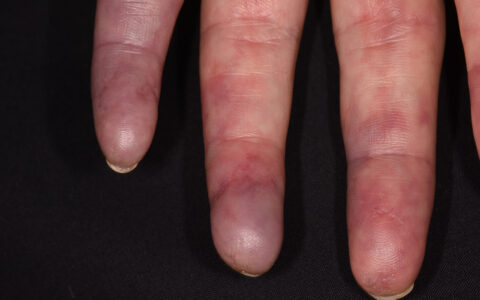A group of physicians and researchers with lupus expertise within the American College of Rheumatology (ACR) have reviewed prior guidelines and zeroed-in on three quality measures for effective management of lupus.
April Barnado, M.D., research director of the Lupus Center at Vanderbilt University Medical Center, was among those to undertake the five-phase process, including three Delphi sessions in a row, as they analyzed the North American and European guidelines released between 2000 to 2020. They used this information to develop quality measures, assessment tools, and identify existing guidelines to implement.
“The goal was to find highly clinically relevant quality measures from the guidelines that would ultimately have a public health impact and could be readily accessed from EHR data,” Barnado said.
The team published their findings in Arthritis Care & Research.
Breaking Ground
According to Barnado, patients diagnosed with systemic lupus erythematosus (SLE) have disproportionately low access to quality care at diagnosis, treatment and monitoring. Even though SLE is associated with significant morbidity and mortality, the ACR had not set quality guidelines for lupus, a situation that Barnardo and the team of experts sought to rectify.
“We have quality measures for most conditions that have a similar incidence rate, both within and outside of rheumatology, but we really didn’t have any in lupus,” Barnado said.
The three measures they developed would deploy in the Rheumatology Informatics System for Effectiveness (RISE), the ACR’s registry of EHR data from rheumatology practices across the United States. This data may be used in the future to establish value-based payments as part of the Centers for Medicare and Medicaid Services Quality Payment Program.
Phases Toward Goal
To begin the five-phase process, Barnado and her group of peers employed a professional librarian to identify all existing North American and European guidelines for lupus and lupus nephritis released between 2000 and 2020. From there, they developed a list of 57 quality constructs divided into three main categories: treatment, monitoring, and phenotyping.
In the second phase, they used a nine-point Likert scale to rate the importance and feasibility of these constructs. In the third phase, the group developed “if/then” statements to define and determine suitability of the identified measures.
“We have quality measures for most conditions that have a similar incidence rate, both within and outside of rheumatology, but we really didn’t have any in lupus”
“For example, if a patient meets a particular criteria, then a quality measure, as reflected in the guideline literature, should be applied,” Barnardo said.
Phase four involved consulting the RISE registry to assess feasibility of integrating the constructs into the EHR and registry data. It was in phase five that the bulk of discussion about distillation of the quality measures took place.
“We had 16 experts vote on both their public health impact, as well as feasibility,” Barnardo said.
Three Quality Measures
The outcome was three measures to be deployed and assessed in RISE.
Hydroxychloroquine use was the focus of the first measure based on its benefits for mitigating disease progression and damage and improving survival, Barnado said.
“Really, all patients with lupus should be on hydroxychloroquine, unless there is a contraindication,” she said.
The second measure states that glucocorticoid dosage should not exceed 7.5 mg per day for more than 6 months, as steroid toxicity correlates with long-term cardiovascular damage and lasting side effects.
“I think a lot of practitioners leave people on steroids for many years because the patient seems to be doing okay,” Bernardo said.
However, the long-term side effects of dosing at 7.5 mg or higher for six months or longer increases the risk of cataracts, osteoporotic fracture and cardiovascular disease, she said.
Lupus patients are typically young and female, Bernardo added.
“Having this damage and complications at any age, but particularly as young as 20 or 30 years old, during childbearing years, is unacceptably detrimental,” she said.
Biologics such as conventional DMARDs (disease-modifying antirheumatic drugs) are recommended as potential alternatives to combat lupus symptoms.
In the final measure, the group specifies that patients with SLE should have their kidney function and protein excretion tested at least every six months.
“This is so we can have early detection and treatment of nephritis to reduce progression of kidney disease and mortality,” Barnado said.
Ongoing Refinement
The ACR workgroup also recommends developing infrastructure to record diagnosis dates, classify lupus nephritis and improve functionality within retrieval of EHR data, including addressing the bugs in the current system. They also endorse research to elucidate additional quality measures.
“I am now working on the creation of treatment guidelines for lupus nephritis to update the old guidelines, which came out in 2012,” Barnado said. “We have some effective newer drugs now that have not been incorporated.”




